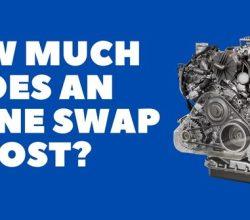An engine is a complex machine that converts fuel into energy, which in turn powers a vehicle or machine. The process by which this energy is produced involves a series of events that take place inside the engine. One of these events is known as the stroke of an engine. In this article, we will explore what the stroke of an engine is and how it affects the performance of an engine.
Overview of Engine Operation
Before delving into what the stroke of an engine is, it is important to understand how an engine operates. An engine works by converting fuel into energy through a series of controlled explosions. This process is initiated by the spark plug which ignites the fuel and air mixture in the engine cylinder. The resulting explosion generates energy that is transferred to the piston.
The piston is connected to the crankshaft via a connecting rod, and as the piston moves up and down in the cylinder, it rotates the crankshaft. The rotation of the crankshaft is what drives the vehicle or machine, providing power for movement or operation.
What is the Stroke of an Engine?
The stroke of an engine refers to the movement of the piston within the engine cylinder. The piston moves up and down in the cylinder, and the distance it travels is known as the stroke. There are two types of strokes that occur during the operation of an engine: the intake stroke and the exhaust stroke.
Intake Stroke
During the intake stroke, the piston moves downward in the cylinder, creating a vacuum that draws air and fuel into the cylinder. This mixture is then compressed by the upward movement of the piston during the compression stroke, which we will discuss in a moment.
Exhaust Stroke
During the exhaust stroke, the piston moves upward in the cylinder, pushing the exhaust gases out of the engine through the exhaust valve. This process is repeated in a continuous cycle as the engine runs, with each stroke of the piston generating energy that is transferred to the crankshaft.
Also check: Will a bad AC compressor affect the engine?
Types of Strokes
There are four types of strokes that can occur during the operation of an engine. These include:
- Intake Stroke: This is the downward movement of the piston that creates a vacuum to draw in air and fuel.
- Compression Stroke: This is the upward movement of the piston that compresses the air and fuel mixture, preparing it for ignition.
- Power Stroke: This is the downward movement of the piston that occurs when the fuel and air mixture is ignited, generating power to drive the vehicle or machine.
- Exhaust Stroke: This is the upward movement of the piston that pushes the exhaust gases out of the engine.
The combination of these four strokes is what creates the continuous cycle of energy production within the engine.
The Importance of Stroke Length
The length of the stroke plays an important role in the performance of an engine. A longer stroke allows for a greater volume of air and fuel to be drawn into the engine, resulting in more power output. However, a longer stroke also means that the piston must travel a greater distance, which can result in increased wear and tear on the engine components.
Conversely, a shorter stroke reduces the amount of air and fuel that can be drawn into the engine, resulting in lower power output. However, a shorter stroke also means that the engine components experience less stress, resulting in a longer lifespan for the engine.
Also check: Are spark plugs in the engine?
Conclusion
The stroke of an engine is an important aspect of its operation. It refers to the movement of the piston within the engine cylinder and the four strokes that occur during the process of converting fuel into energy. The length of the stroke plays a crucial role in the performance of the engine, with a longer stroke resulting in more power output and a shorter stroke resulting in less stress on the engine components.



